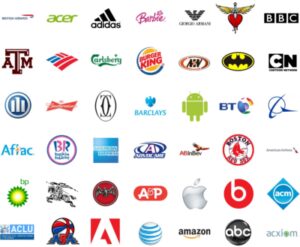As marketers, we want to get our ads in front of the right people, on the right device, at the right time. But how important is it to get our ads in front of people when they are in the right mood? Does the mood of our target audience affect how our ads perform? Research says that it does.
We are bombarded with adverts nowadays. Everywhere we look we have adverts and marketing messages thrust in front of our five senses. Never before in history have we been subjected to such a high volume of advertising. As consumers this annoys us, but as marketers this excites us!
We now have so many opportunities and different channels through which to target our prospects, and the level of targeting has gotten so granular that it’s almost scary.
With companies like Facebook and Google having an incredible amount of data about their users, these advertising platforms make it easier than ever to make sure our ads are being seen by the right people at the right time. But just getting our ads in front of the right prospects doesn’t necessarily mean that they’ll be effective.
In order to make our ads more effective it’s important to consider the mood our target audience is in when they see our ads.
The correlation between mood and ad recall
Professor Fred Bronner from the University of Amsterdam ran an experiment to investigate the effect mood had on the ability to notice and recall adverts in a newspaper they were given.
The study showed that participants who claimed to be in a good or relaxed mood were able to recall significantly more ads from the newspaper compared to those who claimed they were in a bad or stressed mood.
Those participants who said they felt happy and relaxed were able to recall 56% of the ads. The participants who said they felt stressed were only able to recall 36% of the ads.
The effect of mood on how ads are perceived
Another study conducted by Richard Shotton and Laura McClean suggests that people who are in a happy, relaxed state of mind are more likely to respond favourably to an advert they are shown.
They showed the same advert to over 2,000 people. Each participant was asked how much they liked the ad. They were also asked to rate how they were feeling at the time on a scale of 1 to 10, with 0 being miserable and 10 being extremely happy. 21% of participants who rated themselves as happy claimed they liked the ad. In contrast, only 13% of the participants who were in an unhappy mood claimed to like the ad.
Many other studies have shown similar results. Both of the two studies mentioned have demonstrated that consumer moods:
- act as filters that influence how much of an ad they notice and their ability to recall it
- affect their perception of ads – how much they like or dislike them
You now understand just how much of an effect your prospect’s moods have on the effectiveness of your ads.
Use mood to increase ad effectiveness
Here’s how you use these insights into mood to increase the effectiveness of your ad campaigns.
1. Target prospects when they are in environments that put them in a happy state
Although there is no real way to know how our prospects are feeling at any given time, we can make educated guesses by targeting them in environments most likely to make them feel happy or relaxed.
Ads placed at the cinema are a good shout – your prospects are likely to be in a calm, relaxed state of mind when they are on a night out watching a movie. They are also more receptive to seeing ads on the big screen, as this is part of the experience of watching a movie at the cinema.
You can place your ads on billboards (print or digital) in places where people go out to enjoy themselves – normally city centers or areas where there are lots of restaurants and other forms of entertainment – bowling alleys, ice skating rinks, shopping centers, etc.
2. Target Prospects between Friday and Sunday
Studies have shown that consumers are more likely to be in a good mood between Friday and Sunday compared to any other day.
The peak is on Saturday when people are more than 40% more likely to be feeling in a happier, relaxed state of mind. This is not surprising. People love Fridays as they signal the end of the work week and the start of the weekend. People are most likely to be at their happiest on Saturdays, as it’s a day when most people are relaxing or are out socialising, or just enjoying themselves in general.
Targeting consumers during these days greatly increases the chances of them being more memorable and making a positive impression.
3. Match your ad messaging to your prospects’ moods
If you can roughly guess when your prospects are likely to be in a happier or sad mood, you should change your ad messaging to match accordingly.
Using granular targeting available on many of the ad platforms today you can target people during significant moments, events, or occasions such as birthdays, wedding anniversaries, holidays, etc. Your prospects are likely to be in good moods during these times so you should match your ad messaging accordingly.
High energy ads are well received when people are in a happy, relaxed, or excited mood. If your product or service is something that targets people likely to be in sad, stressed, or unhappy moods, e.g. funeral services, or people with serious medical conditions, then your ad should be more considerate in tone to match their mood.
Key takeaways
Targeting your prospects with ads when they are in the right mood significantly improves the chances that they will like and be able to recall your ad, therefore significantly increasing the chances of them becoming a customer down the line.
When you can achieve congruence between the tone of your ads and your prospect’s moods, you will start to see better results from your marketing campaigns.




